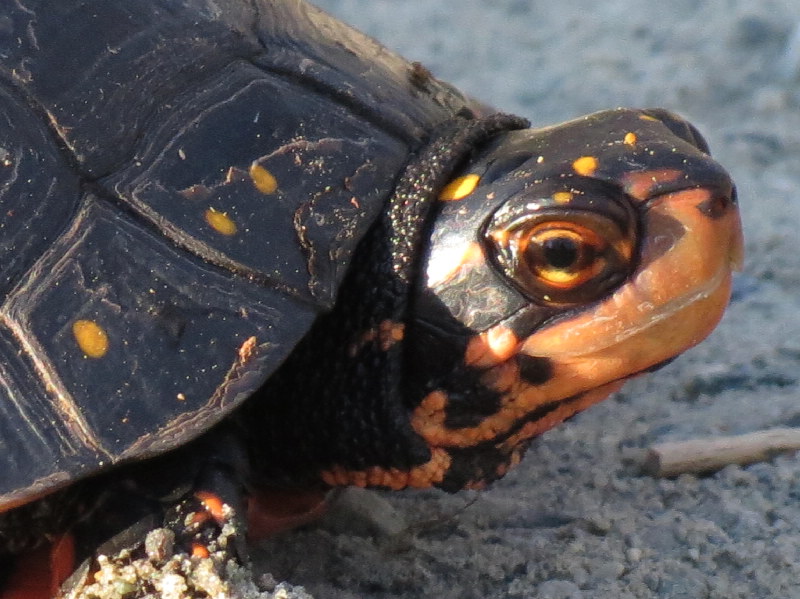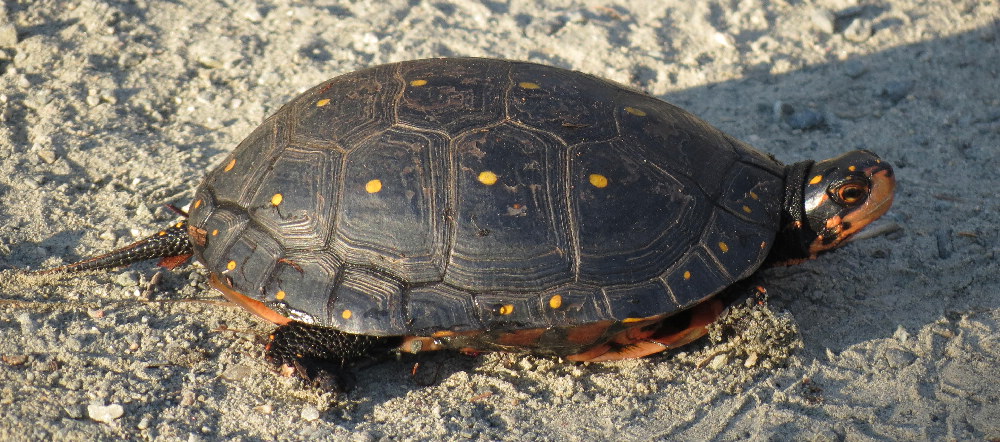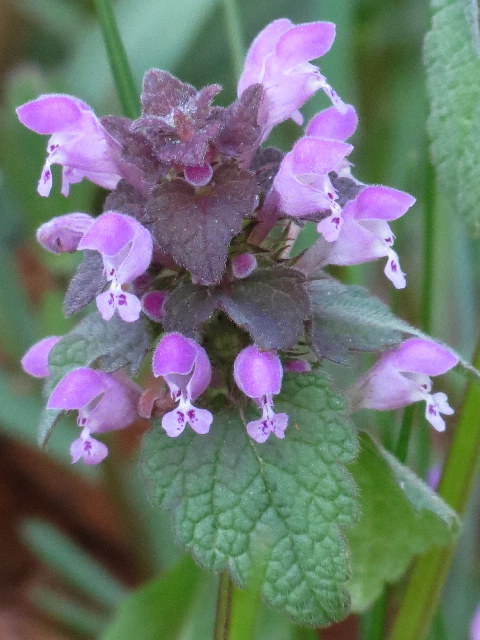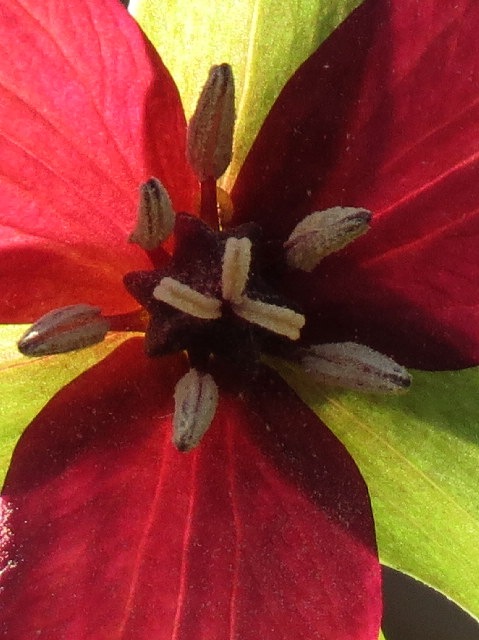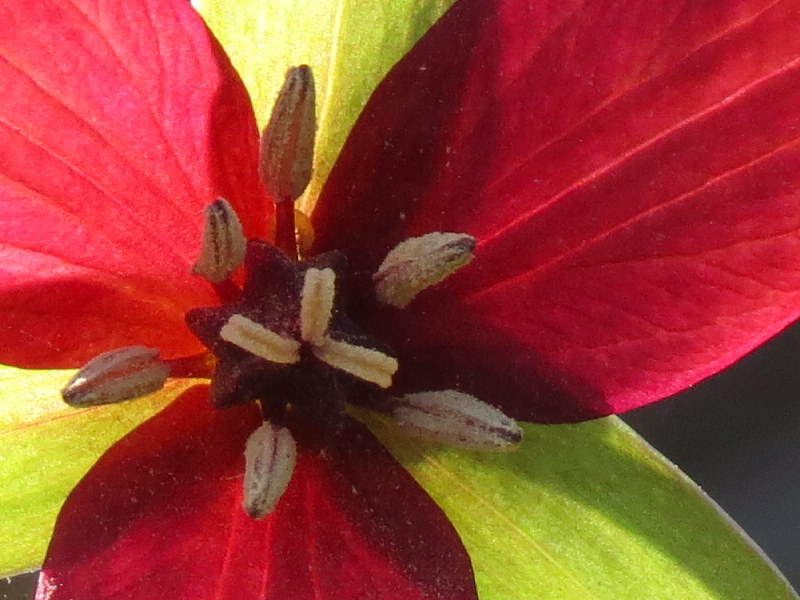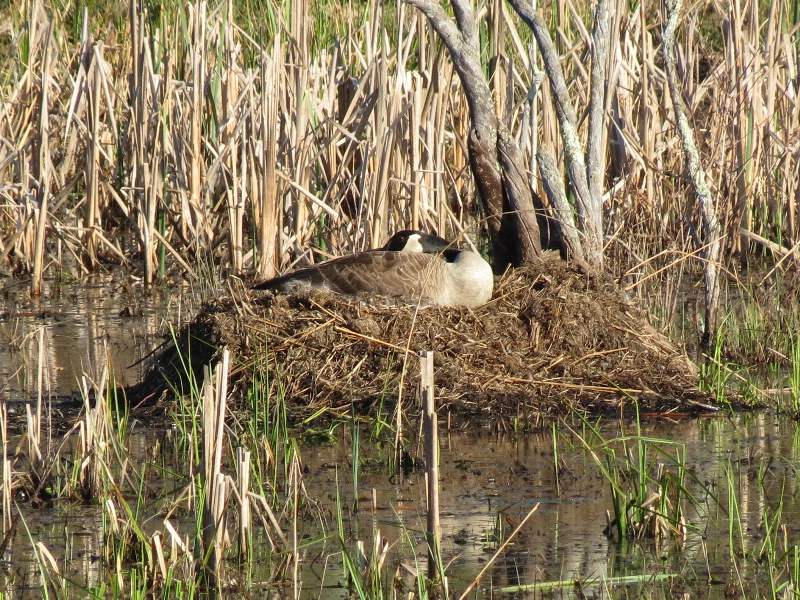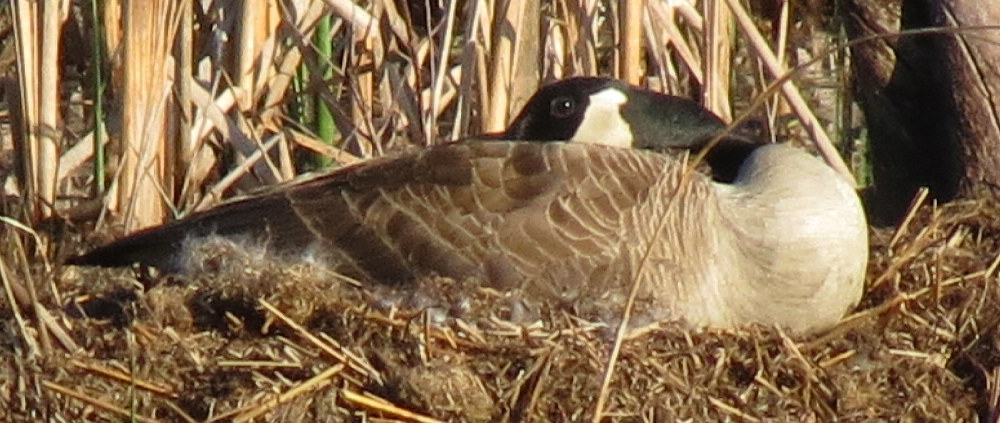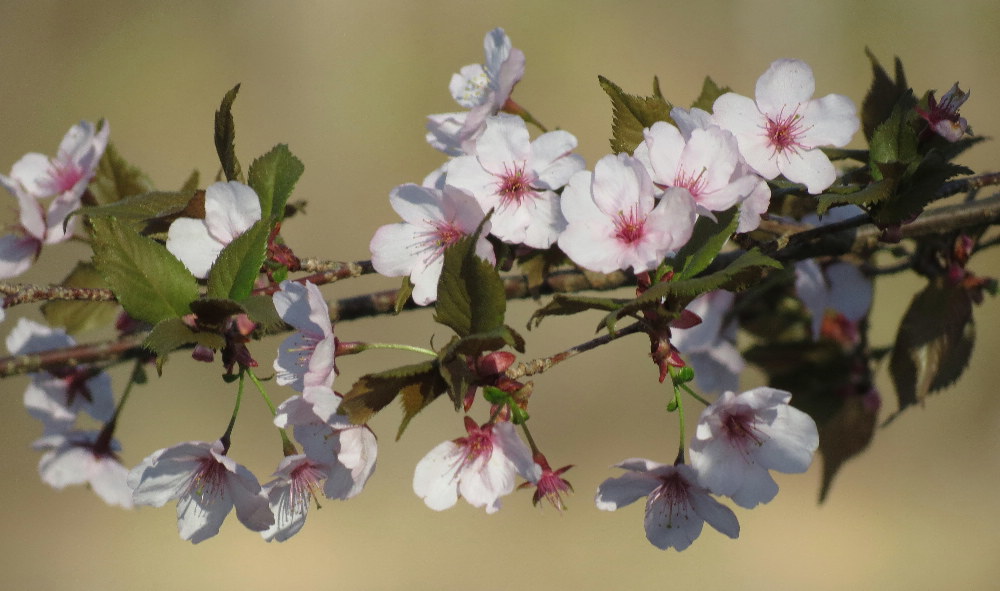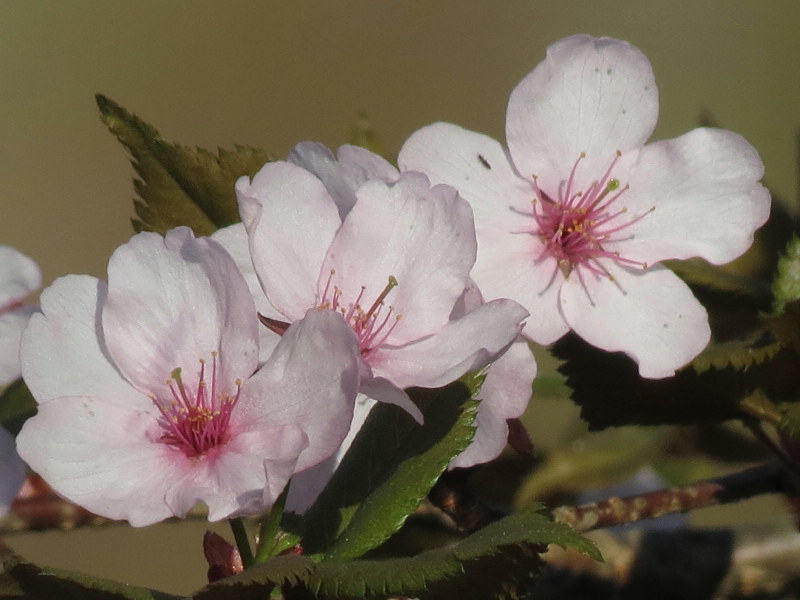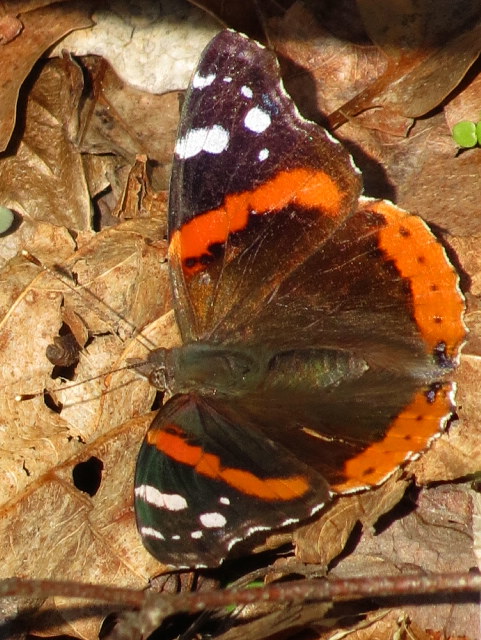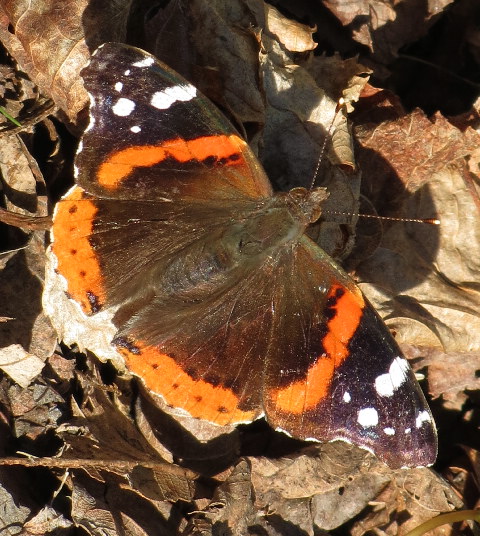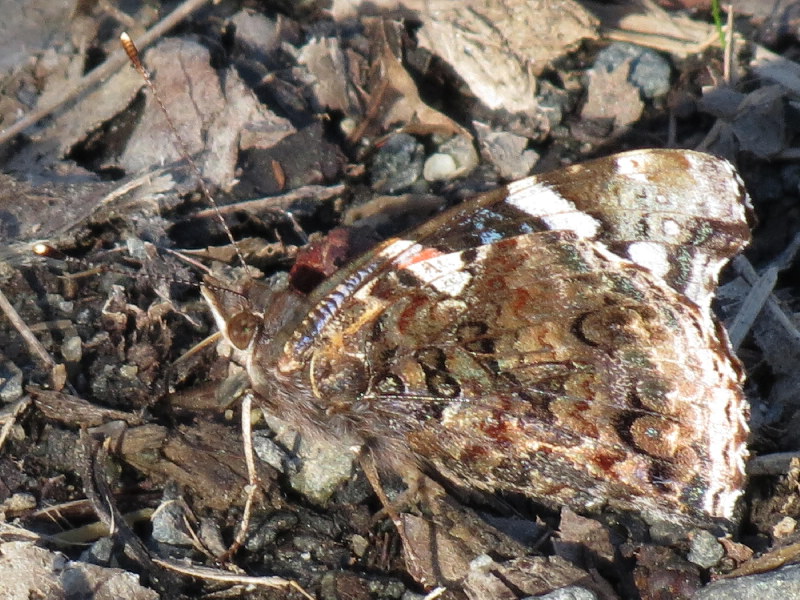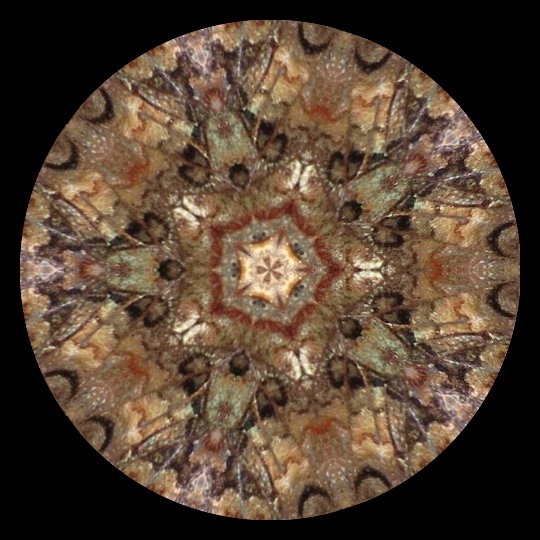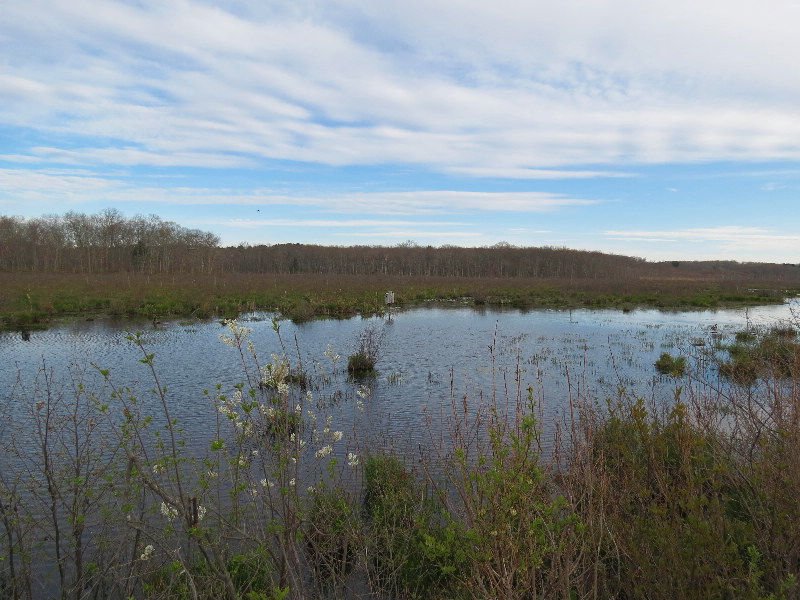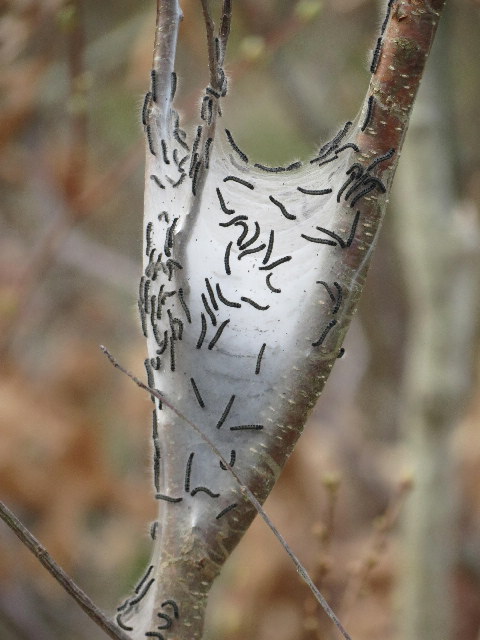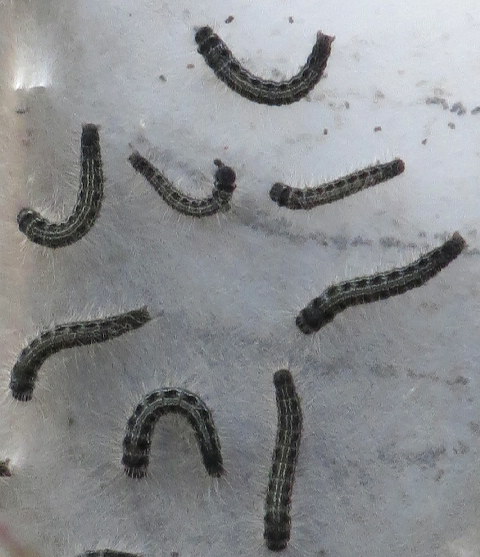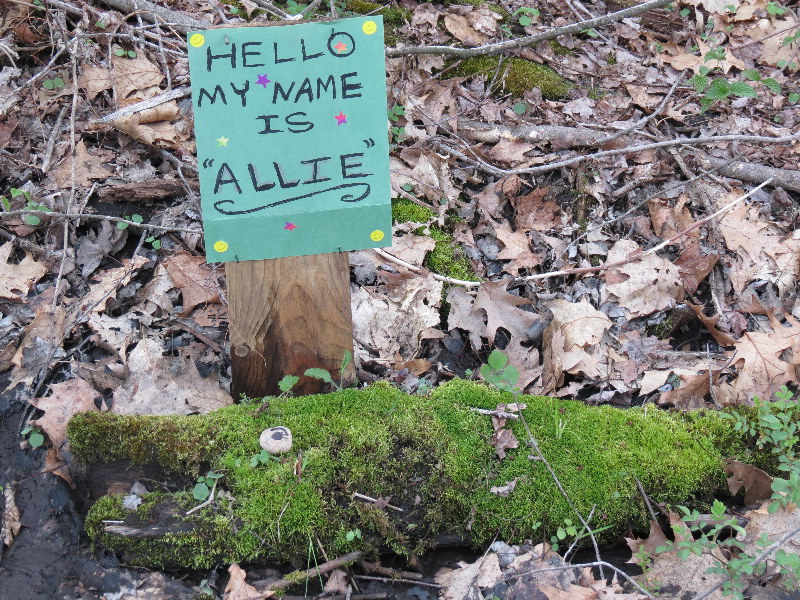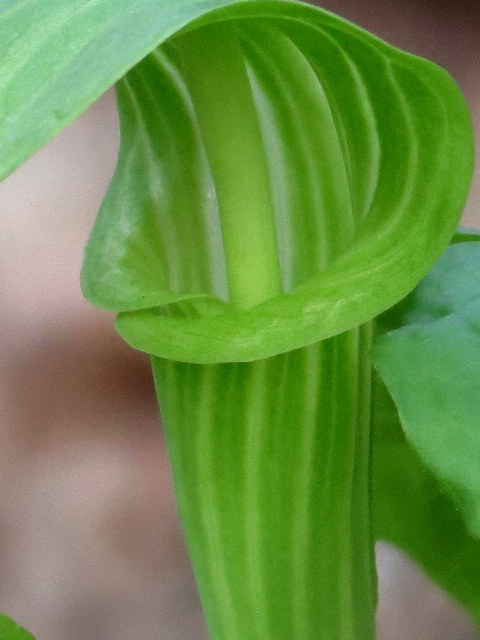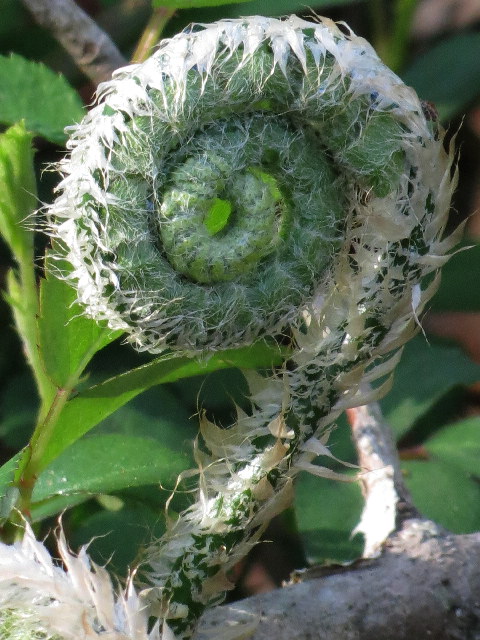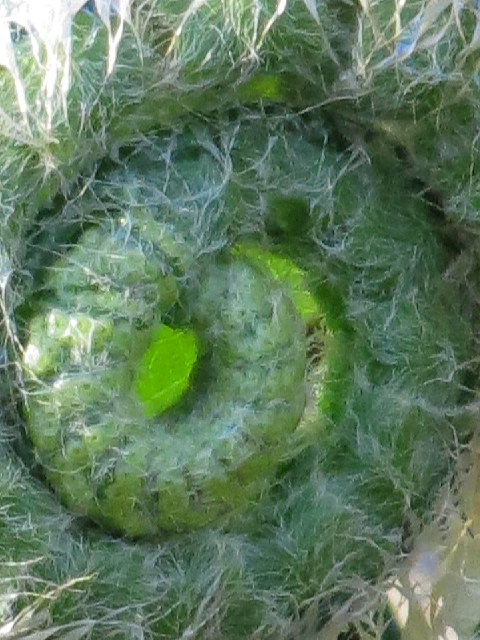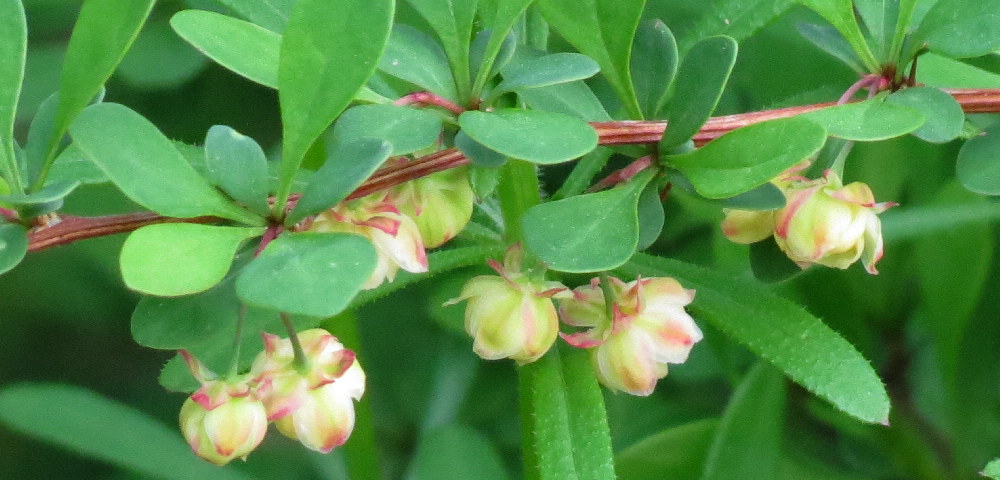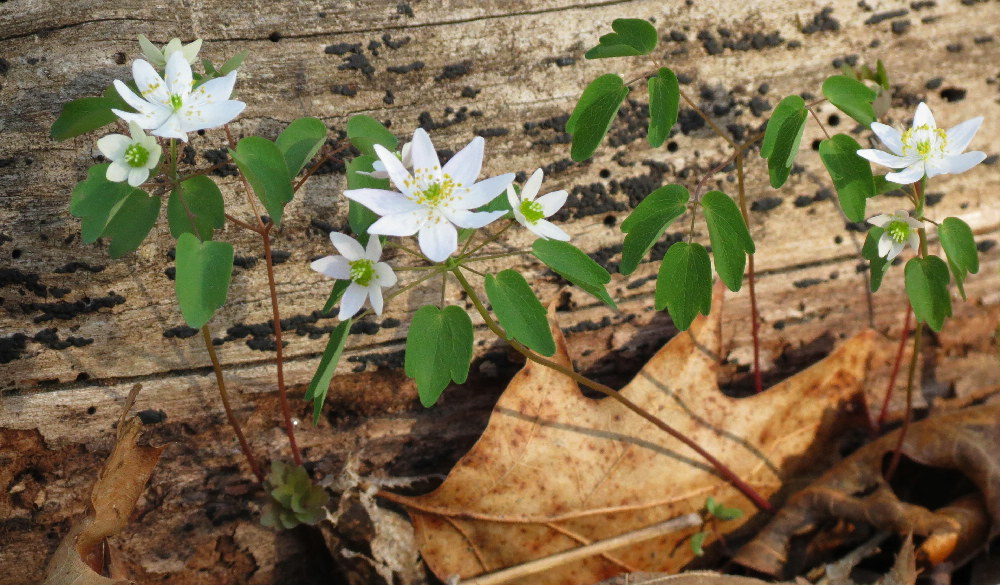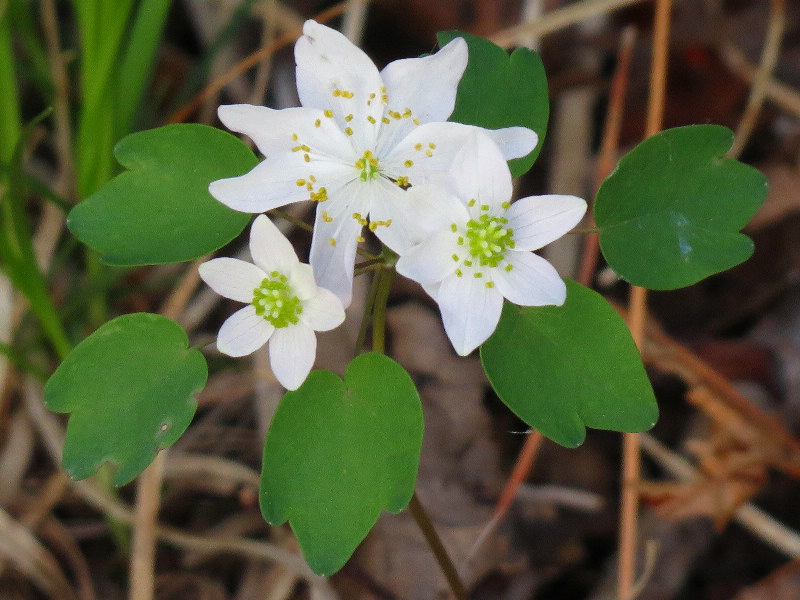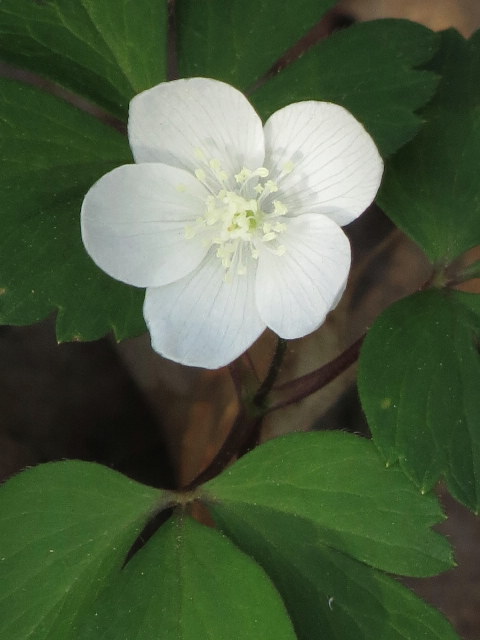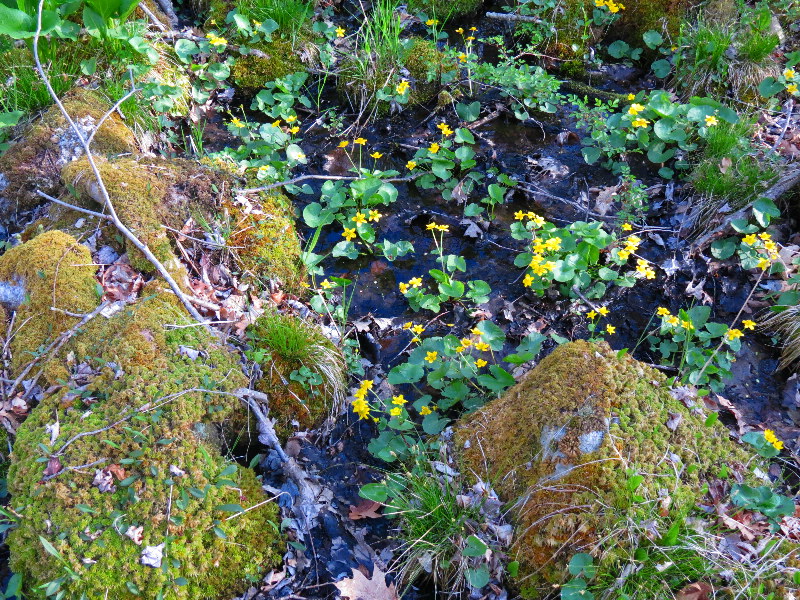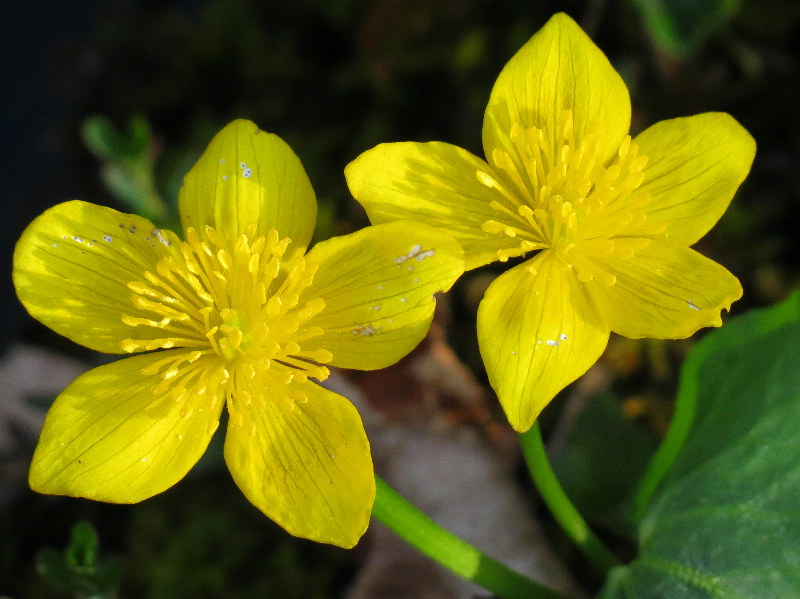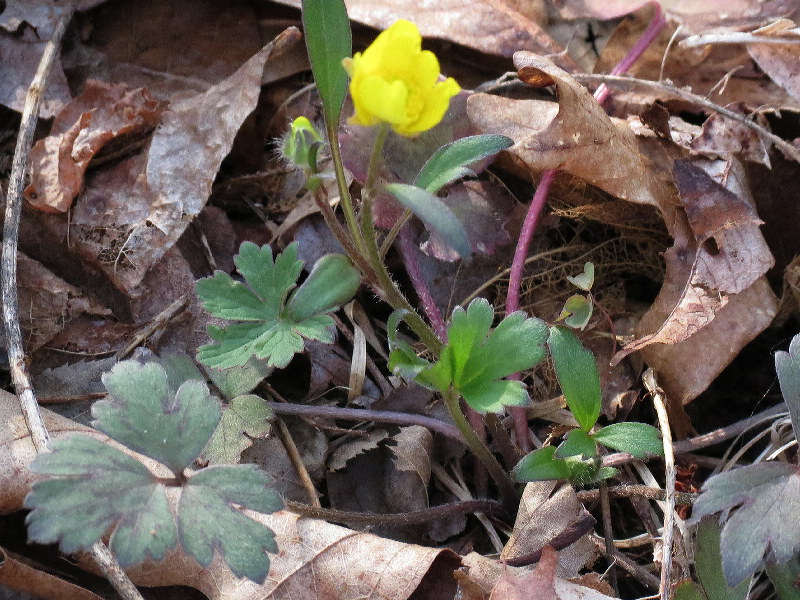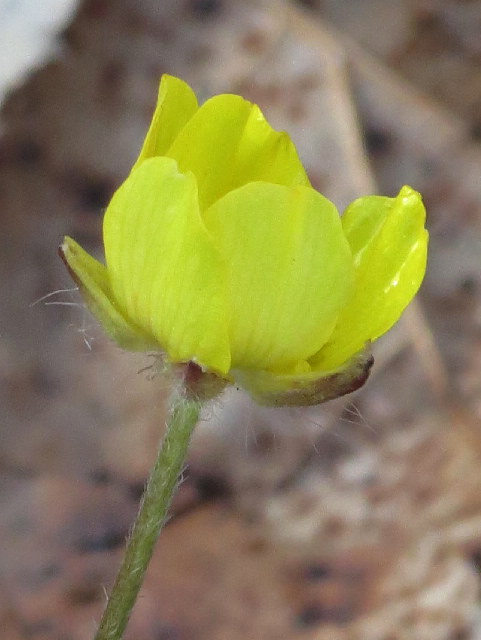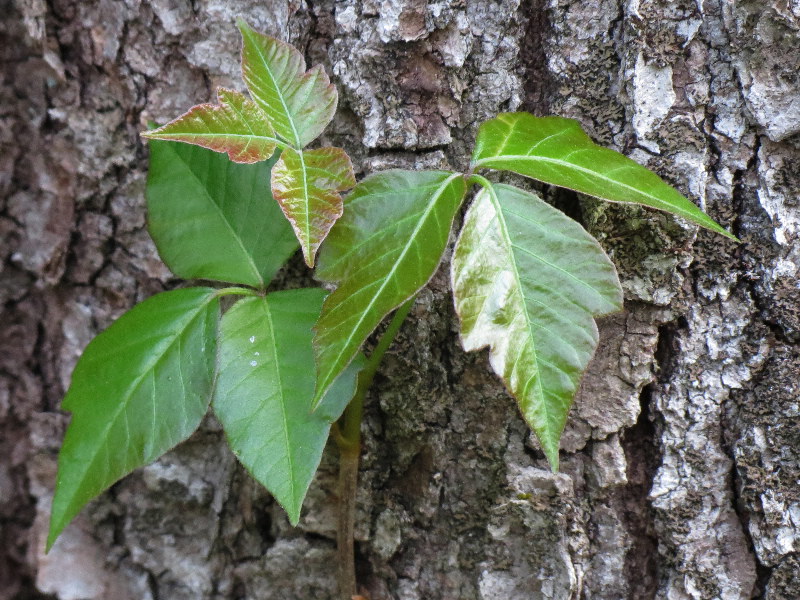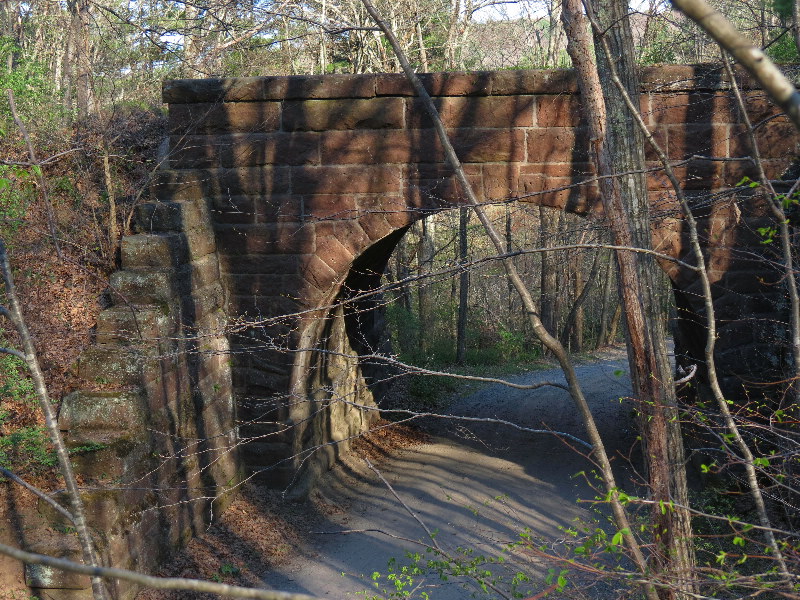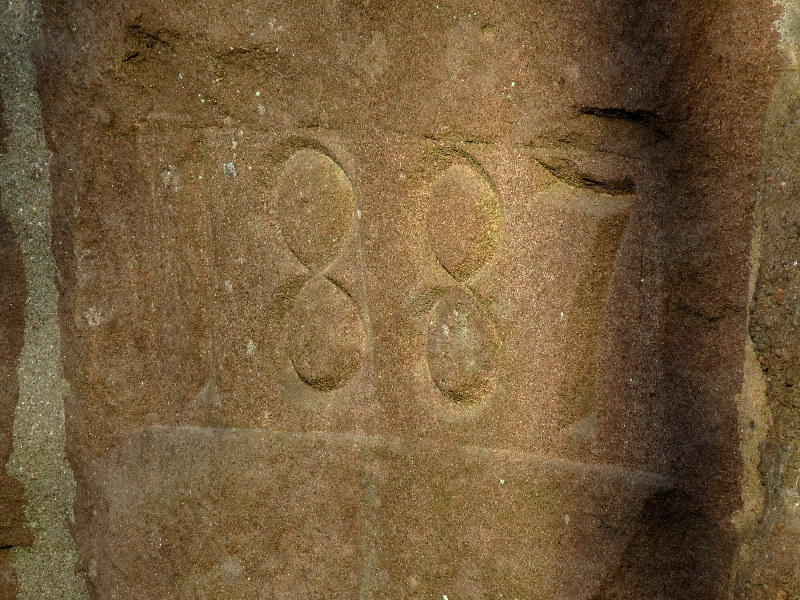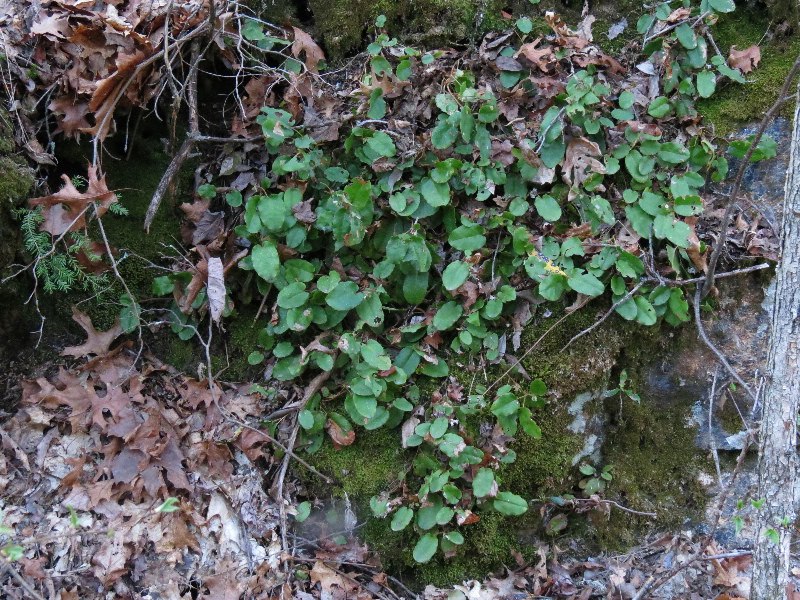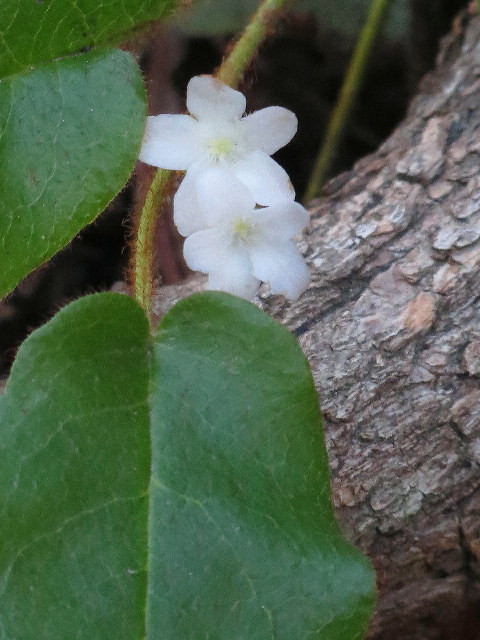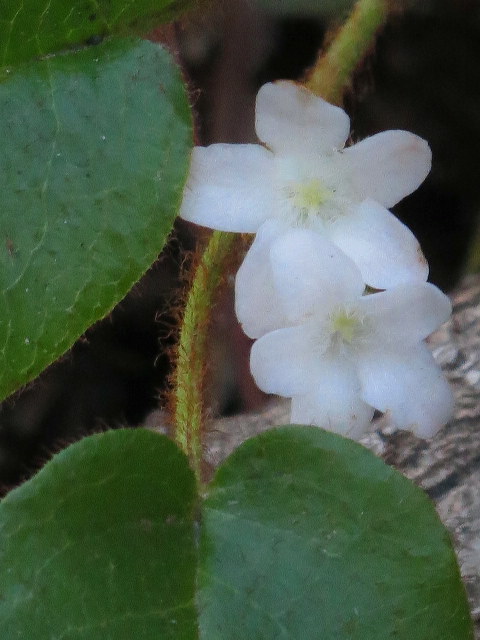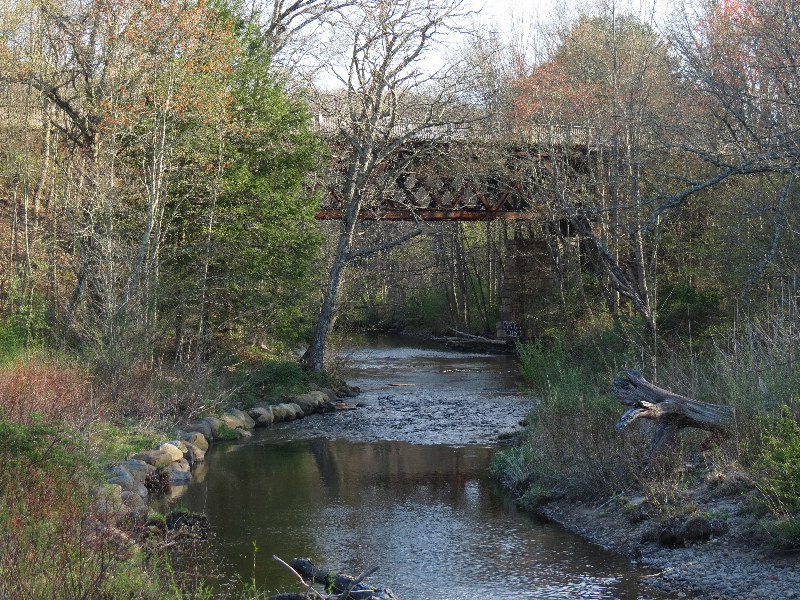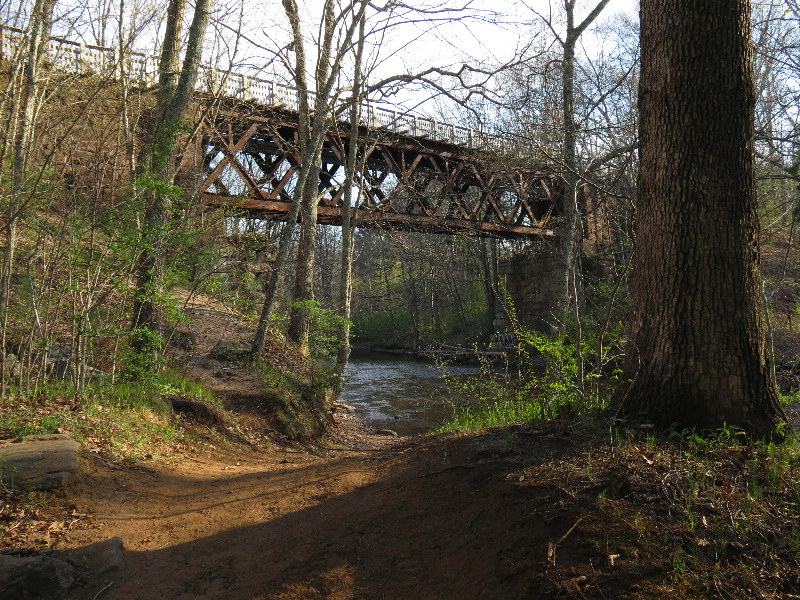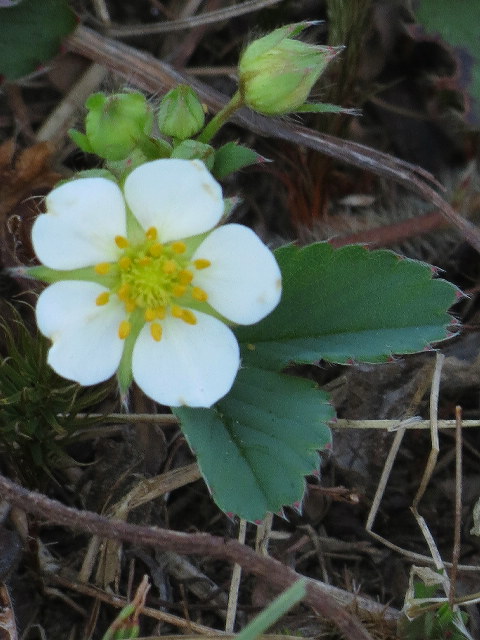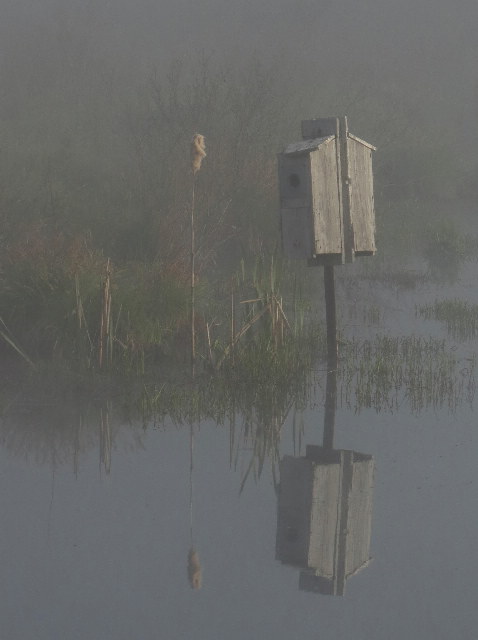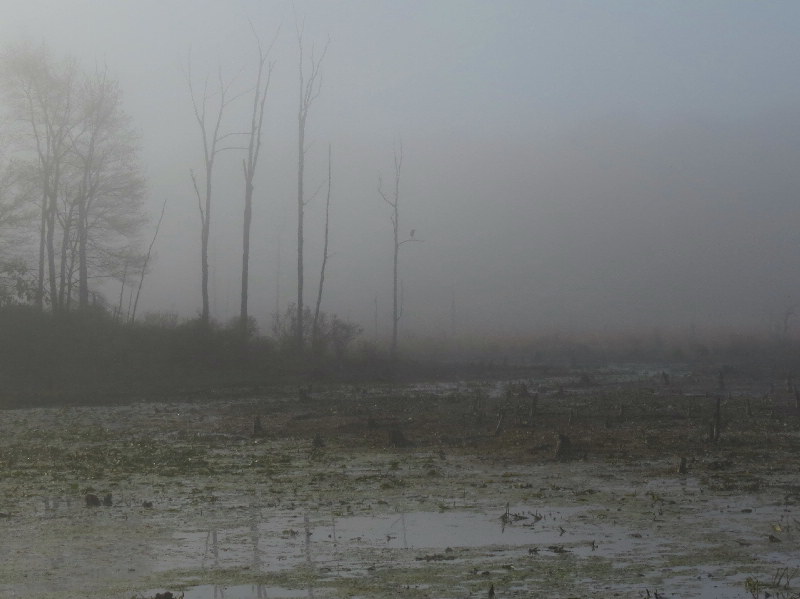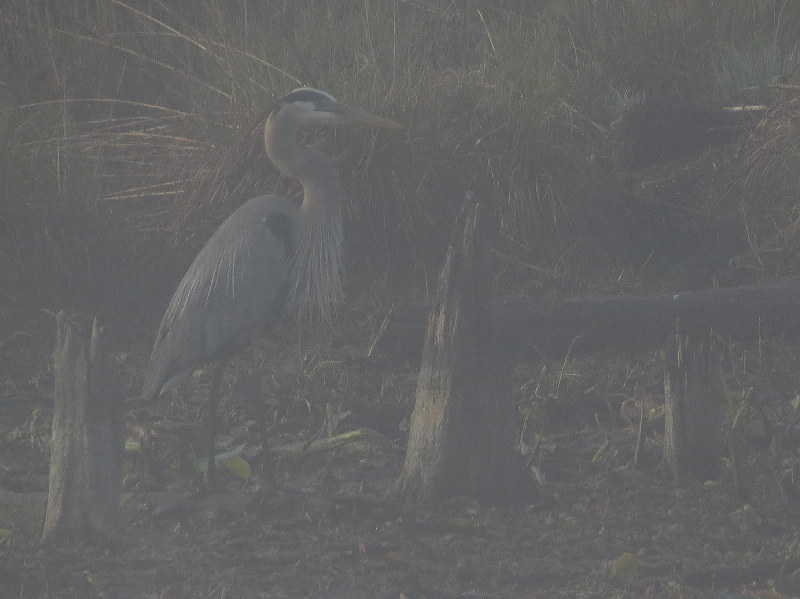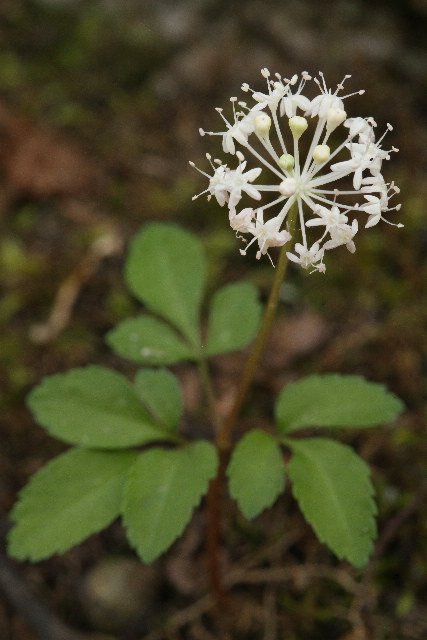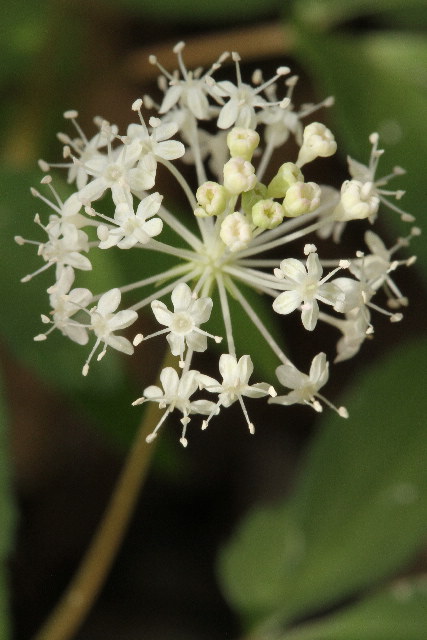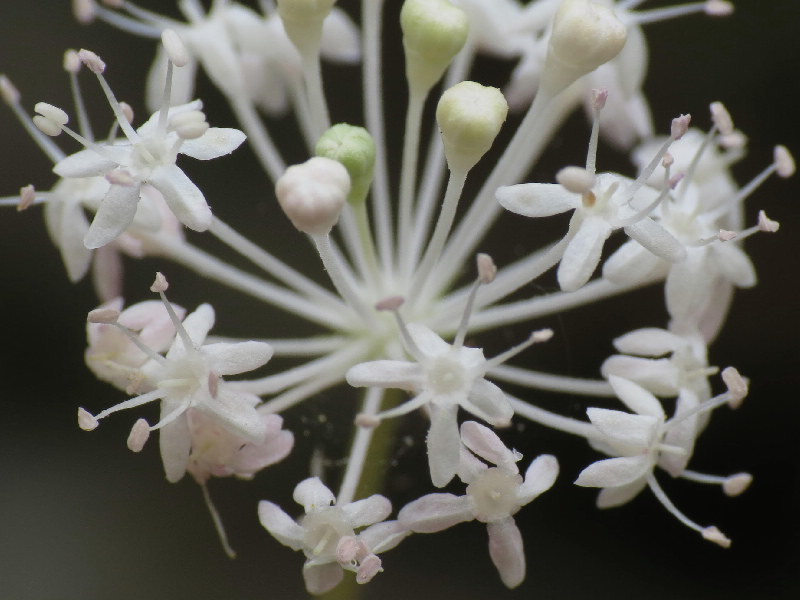Along the Air Line... 2012 - Spring, Part 5 The Air Line Trail in Eastern Connecticut - Stan Malcolm Photos |
mHome Page Stan's FlickR Albums |
April 17th. A Spotted Turtle (Clemmys guttata)... spotted crossing the trail near the junction of the Colchester Spur. |
|
East of Route 207, I found Purple Dead-Nettle (Lamium purpureum), a mint. |
Purple or Red Trillium (Trillium erectum). |
|
Canada Geese (Branta canadensis) have a nest far across the marsh east of Route 207. |
|
An "escaped" ornamental Flowering Plum tree. |
|
A Red Admiral (Vanessa atalanta). Typically, these do not survive Connecticut winters; migrating to the state each spring. However, given our exceptionally mild winter and warm April, this might be a "native." It also might be a sign of a banner year for them here, with more than one generation before fall migration south. |
|
|
Wings folded, the brighly colored Red Admiral simple disappears. |
Just for fun, a couple of Kaleidoscope captures based on the Red Admiral images. |
April 18th. Strange noises on the marsh. I was unable to capture the sound in video due to wind noise on the microphone. |
Eastern Tent Caterpillars (Malacosoma americanum) have emerged to build their silken nests in the crotches of Cherry (and Apple, etc.). |
|
First sighting of this strange creature. |
April 19th. Jack-in-the-Pulpit (Arisaema atrorubens) has just started blooming. |
Fern fiddleheads are beginning to open. |
|
The thorny invasive Barberry (Berberus thunbergii) is bloming. |
Rue-anemone (Thalictrum - formerly Anemonella - thalictroides). |
The flowers are hermaphroditic; that is, they have both female (pistil) and male (stamen) sexual organs. However, to discourage inbreeding, the pistils mature first (flower at lower left) and senesce before the pollen-bearing stamens (flower at top) become active. |
Wood Anemone (Anemone quinquefolia) has a similar flower (they're both in the buttercup family Ranunculaceae), but differently shaped leaves. |
Marsh Marigold (Caltha palustris) is another member of the Ranunculaceae. It requires wet roots. Here it shares a swamp with rocks carpeted in water-loving Sphagnum Moss. |
|
I'm pretty sure this is a Buttercup, but I'm not sure which species. Again, a member of the Family Ranunculaceae. Note the divided basal leaves, with simple leaves on the flower stalk. |
I saw only a single specimen in open woodlands. |
Sadly, spring brings Poison Ivy (Toxicodendron radicans), here shown climbing a tree trunk - but it also trails along the ground in many places. At this stage when the leaves are inconspicuous, it's easy to pick up the blistering oils when you stray off the trail. |
Late afternoon at the Brownstone Bridge over River Road... |
...erected in 1887. |
Several hundred yards west are two patches of Trailing Arbutus (Epigaea repens); looking a little bedragled for lack of water and a winter without snow cover. |
These were the best of the very few flowers. |
|
Next, a brief stop near the bridge over the Blackledge River. |
|
Near the bridge I found Trout-lily (Erythronium americanum) in bloom. |
When not in flower, the mottled leaves still allow easy identification. |
In a dry, overgrown meadow, wild Strawberries (Fragraria virginiana) were in flower. |
April 20th. A foggy morning on the marsh. |
Fog can't hide the effects of serious drought. Much of the marsh bottom is exposed. |
This distant Great Blue Heron is standing in what should be nearly two feet of water. Heavy rain is predicted for the 22nd. Let's hope the forecast is correct and some relief is coming. |
On a brighter note, Dwarf Ginseng (Panax trifolius) is doing well. |
|
|
